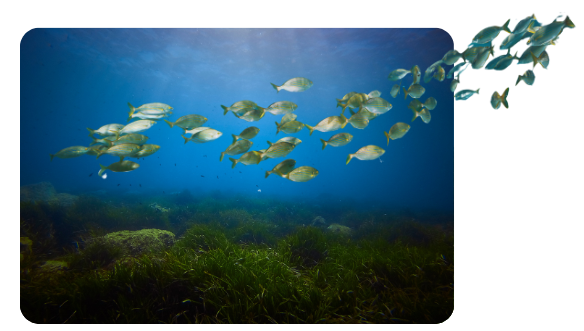Story
Water pollution postpones Triathlons in Paris Olympics, highlighting urgent issue of water quality
02 August 2024
Recent concerns over poor water quality at the Paris Olympics 2024 have highlighted the urgent need for effective monitoring and management of rivers. At PML, we are at the forefront of using advanced Earth Observation (EO) technology to monitor water quality remotely, discover some of our latest projects.

With advancements in technology both from in situ sensors and Earth Observation (EO), there is an incredible amount of data available to marine scientists to study the environment. These include measurements made from samples collected by boats, data from marine moorings, buoys, sensors on bridges, unmanned vessels, as well as satellite data. Satellite data is now available at very high resolution so that a range of parameters and the intricate details of these in rivers, estuaries and the coast can be easily seen from space.
EO through satellites can complement conventional water sampling, filling information gaps resulting from infrequent visits that do not observe the (natural or other) variability within waterbodies.
Discover some of our Earth Observation and water quality projects…
Waterborne Infectious Diseases and Global Earth Observation in the Nearshore
The European Space Agency-Funded ‘Waterborne Infectious Diseases and Global Earth Observation in the Nearshore’ (WIDGEON) project, an initiative funded by the European Space Agency (ESA), leverages Earth Observation (EO) technologies to enhance our understanding of aquatic ecosystems by assessing key parameters such as algal blooms, turbidity, E. Coli and surface temperature. By integrating satellite data, WIDGEON aims to deliver near-real-time water quality assessments, facilitating proactive management and protection of vital water resources for coastal communities in Southwest India.
VISualisation and Assessment of water quality using an Open Data Cube FOR the weStern English channel (Vis4Sea)
Periodic flooding as a result of heavy rainfall is becoming more frequent in coastal regions of the western English Channel. This is because the heating of inland water and the sea is causing more evapo-transpiration which results in high rainfall, and then flooding. These flooding events can carry agricultural fertilisers, sewage effluent and, in some locations, heavy metals from mining tailing ponds from the rivers to the coast – posing a risk to human health and to the environment through the deposition of high nutrients, suspended material, viruses and bacteria to the coast. Vis4Sea is measuring the impacts of flooding on water quality in the Plymouth Sound and the wider Western Channel Observatory, with lessons learnt to also be applied to the Fitzroy River in Australia where periodic flooding is becoming more frequent.
Water-Associated infectious Diseases in India: digital Management tools
Additionally, the Wellcome Trust funded-project: Water-Associated infectious Diseases in India: digital Management tools (WADIM) aims to develop a multi-layered digital tool to map sanitation conditions and occurrence of disease and changes therein, especially in the event of flooding due to monsoon rainfall or natural disasters. The required data will be collected through a smartphone application in which stakeholders and citizens in local communities of two locations in India – a primary site in the coastal southwest and an inland location in the Punjab.
EO4Health Resilience Project
All of the above aligns with the broader goals of EO4Health Resilience Project, another ESA initiative, which emphasizes the role of satellite data in promoting public health by monitoring environmental factors that can affect human well-being. A consortium built out of academic, industry and inter-governmental bodies aims to create an accessible digital platform for anyone to leverage data from satellites.
S-3 EUROHAB
A previous PML project S-3 EUROHAB, used data from the European satellite, Copernicus Sentinel 3, to track the growth and spread of HABs and phytoplankton abundance related to water quality, in the English Channel and specifically from the outflow of the River Seine along the French coast. The satellite data were used to create a web based alert system, the first of its kind in Europe, to alert marine managers and fishing industries of the growth of potentially damaging algal blooms and water quality along both the French and English coasts.
Together, these projects underscore the potential of EO technology in safeguarding water quality and ensuring sustainable water management for public health benefits.
